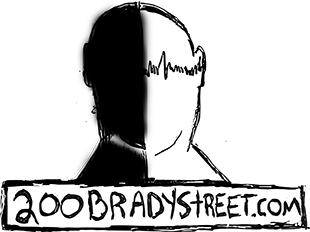The Tools We’re Building
What if public enforcement data was actually public? What if anyone could explore bylaw tickets, enforcement patterns, or challenge processes without running into red tape or a $1,800 FOI bill?
This platform began with a simple question: Why did I get a ticket when there was no snow on the ground? It grew into something bigger: a civic toolkit to help communities see how enforcement works and hold it to account.
Not hypotheticals, real features
These aren’t vague ideas. They are real tools, in development now.
From open ticket explorers to enforcement maps and FOI assistance, these tools turn enforcement into evidence, and data into civic power.
SEE THE FINE PRINT BEHIND THE FINE
Enforcement Record
Every ticket issued by a city is an official action, a moment where automated systems, bylaws, and civic judgment intersect. Most people only see the fine. But behind that number is a network of rules, logic triggers, enforcement devices, and legal references that remain completely opaque to the public.
The Enforcement Record is where that changes. This milestone will establish a structured, explorable record of enforcement, connecting tickets to:
- The bylaws they cite
- The locations where they were issued
- The devices that triggered them
- The time and context in which they occurred
Over time, these records will be cross referenced with:
- Related bylaws and legislative clauses
- Known enforcement camera locations and deployment histories
- Public FOI disclosures
- Geographic and policy zones
- Systemic enforcement trends
Each record becomes a civic document, searchable, citable, and ultimately useful to researchers, journalists, legal advocates, and everyday people who simply want to understand how the law is applied in their city.
This is the foundation. The Enforcement Record is where visibility begins, and from it, public oversight becomes possible.
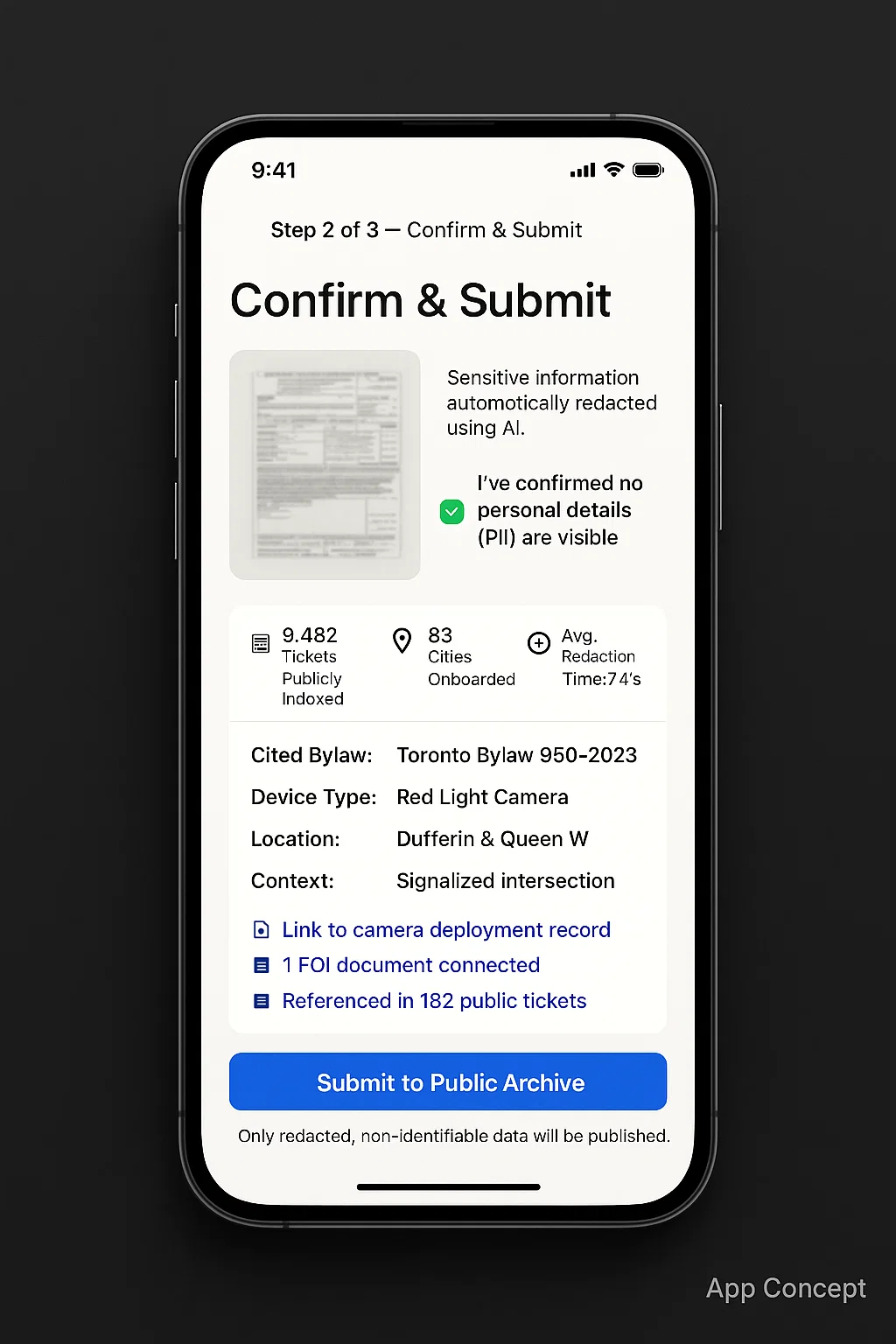
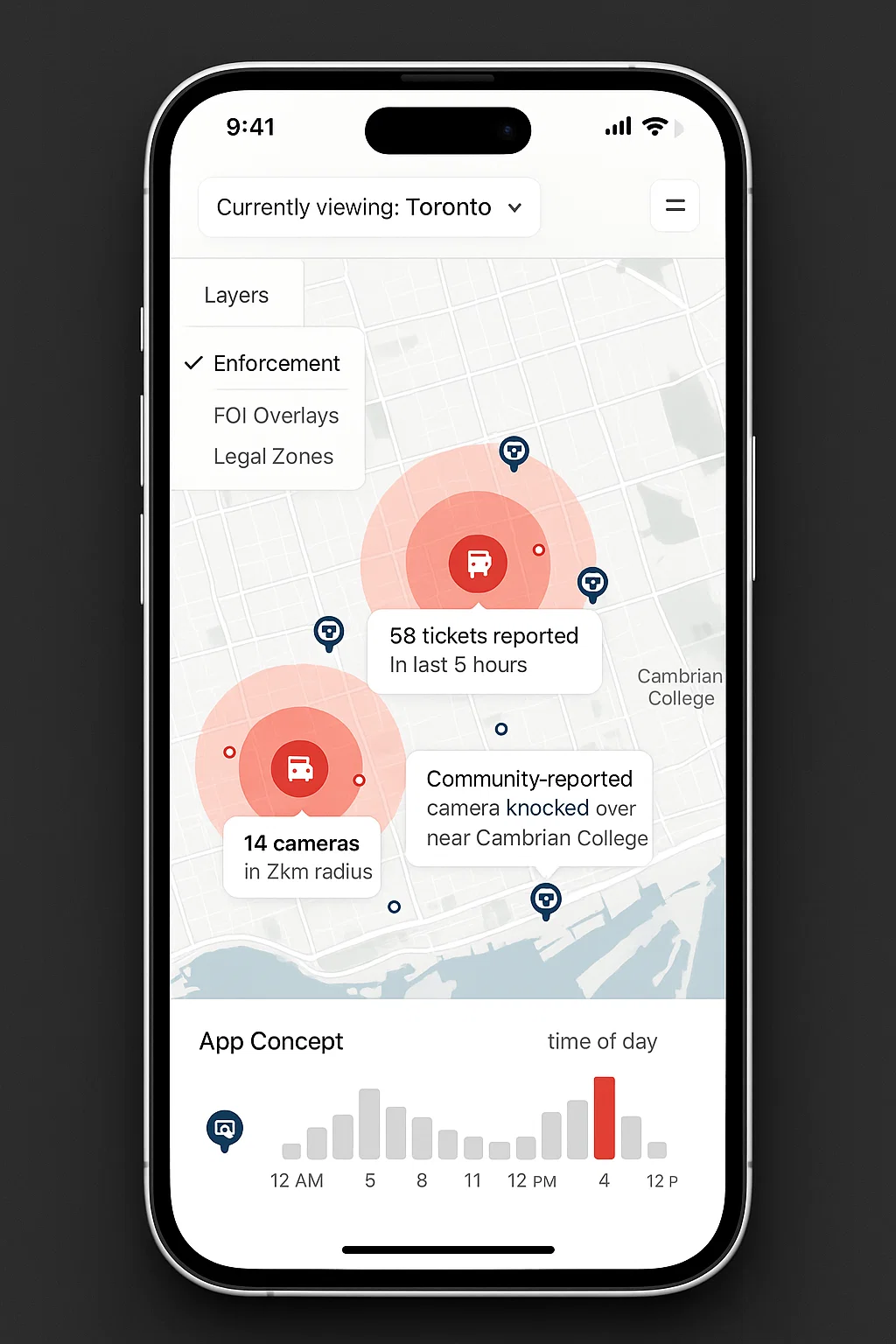
SEEING WHERE ENFORCEMENT HAPPENS AND HOW IT MOVES
Civic Enforcement Visualization
Enforcement is physical. Cameras don’t issue tickets in theory, they’re placed at intersections, roadsides, and school zones. But the public rarely gets to see that infrastructure, let alone understand its logic.
This milestone creates a spatial interface for civic enforcement, visualizing:
- Where tickets are issued
- Where cameras are placed
- Where policies are enforced most aggressively
It starts with a public facing enforcement map, showing known camera locations across a city. But it expands far beyond that. We’re working toward a visual layer that will:
- Link ticket data to known camera sites and policy zones
- Show the reach and density of automated enforcement systems
- Display patterns over time, by season, time of day, or policy shift
- Integrate FOI based deployment records and bylaw overlays
- Provide visual equity insights, like who gets ticketed, where, and how often
The goal isn’t just to map enforcement, it’s to contextualize it. To turn invisible infrastructure into visible data. To create a civic map that answers the question: “Where is the law being enforced, and what does that say about the system enforcing it?”
EVERY FOI RESPONSE SHOULD SERVE MORE THAN ONE PERSON
FOI Record Archive & Assist Mode
When someone files a Freedom of Information (FOI) request and gets a response, that document often disappears into a private inbox. We believe those records should be public and permanent.
The platform is building a global archive of FOI responses, searchable, linkable, and open to all. Whether the request was about traffic enforcement, bylaw logic, procurement contracts, or anything else, our goal is to make that information available beyond the original requester.
This isn’t just about visibility, it’s about reusability. One FOI request should benefit many.
As that archive grows, it will form the foundation for a secondary feature: FOI Assist. The aim is to make it easier to prepare, file, and track new requests, and eventually pilot a subsidy model where contributors help cover FOI fees for those facing financial barriers.
But it starts with the record itself, a public index of public requests, open to all, and owned by no one.
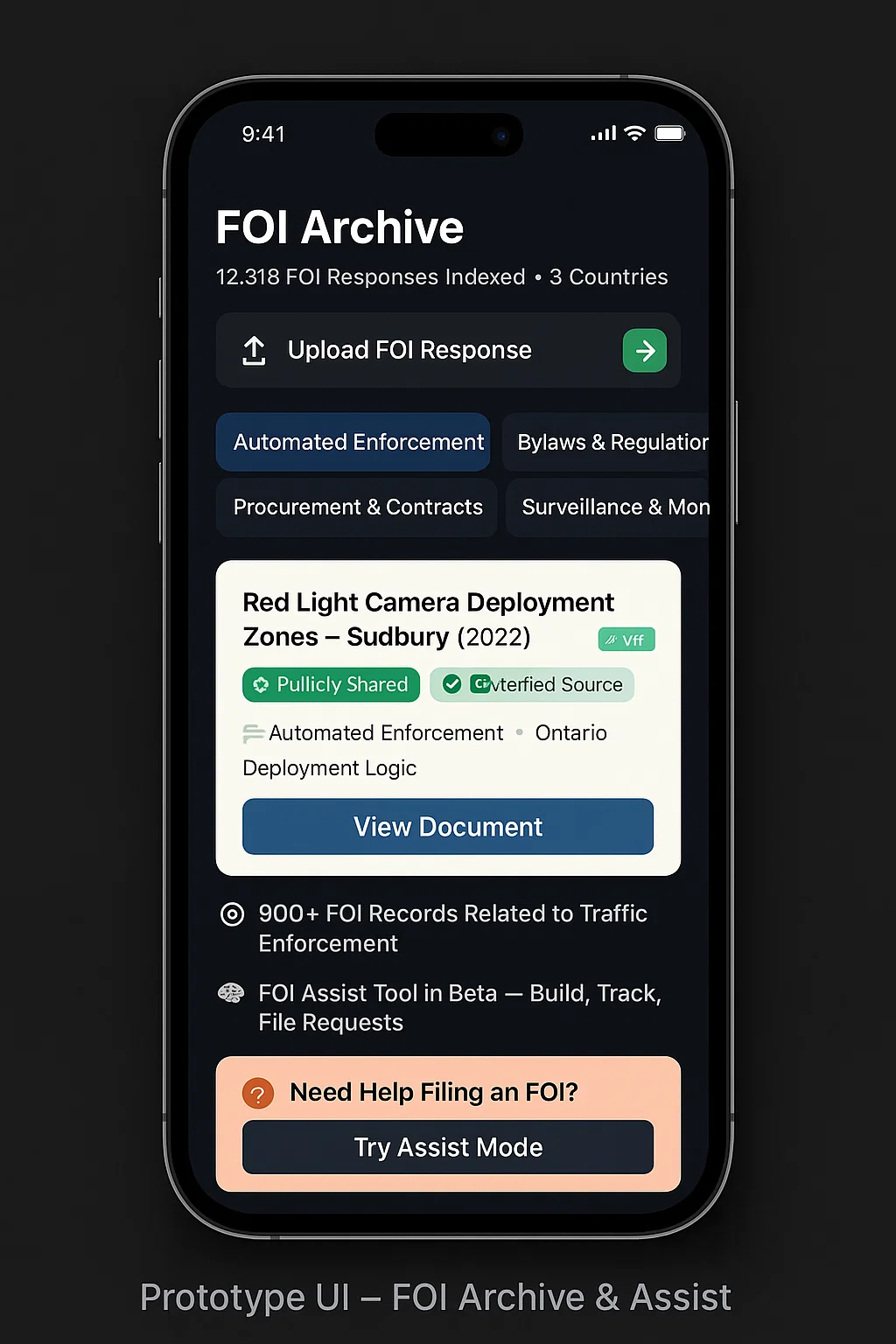
IF YOU CAN’T READ THE RULES, HOW CAN YOU FOLLOW THEM?
Legal Reference Layer
Behind every ticket is a bylaw. Behind every bylaw is a system of language, dense, technical, and often hidden in PDFs scattered across city websites. For most people, these rules are unreadable. For some cities, they’re unsearchable.
This milestone builds a structured, public facing record of local enforcement laws, not just to display them, but to decode them.
It’s more than a browser. It’s a civic code engine that:
- Breaks down each bylaw into structured, searchable components
- Links specific sections to the enforcement actions they authorize
- Flags vague, outdated, or overly broad clauses for public scrutiny
- Tracks changes over time so communities can see when and how laws evolve
- Standardizes formatting across jurisdictions and allows cross city comparison
This layer is foundational. It makes visible the legal logic that powers enforcement and begins to build the civic literacy needed for accountability.
Why? Because if we’re held accountable to these rules, they should be held accountable to us.
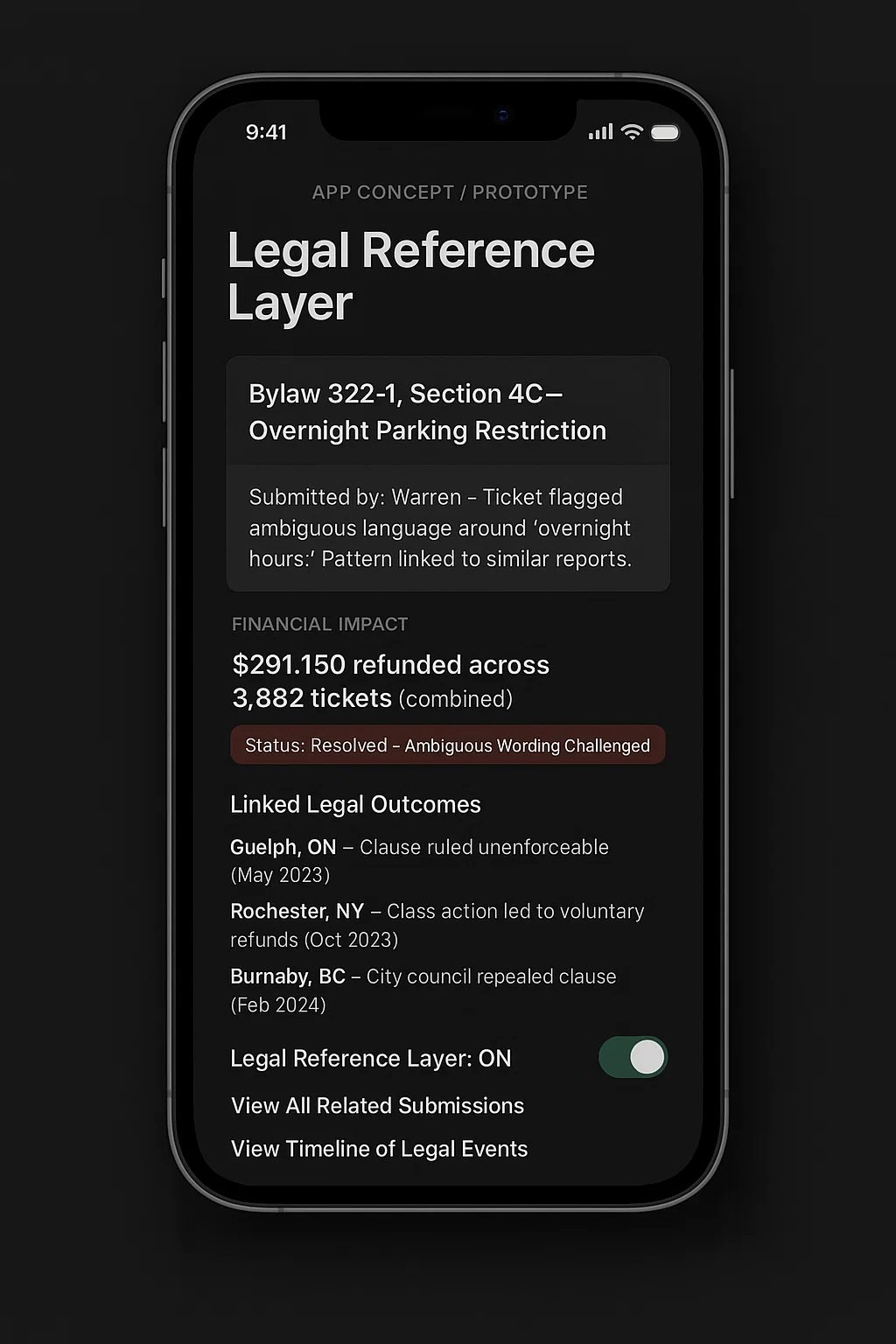
ENFORCEMENT POLICIES CHANGE. THE PUBLIC DESERVES TO SEE WHEN, HOW, AND WHY
Public Policy Record
Most people only notice a policy change when they get a ticket. But behind every fine increase, bylaw update, or new enforcement zone is a policy decision, often buried in council minutes, procurement contracts, or regulatory amendments.
This milestone exists to surface those shifts. The Public Policy Record is a structured, public timeline of the rules and decisions that shape how enforcement happens. Not just what the laws are, but how, when, and why they change.
It captures and links changes to bylaws, city ordinances, and provincial statutes. It documents shifts in fine amounts, victim surcharges, and legal classifications. It visualizes council votes and budget allocations tied to enforcement, and contracts with vendors supplying red light, speed, and license plate cameras.
It identifies the expansion or contraction of enforcement zones, grace periods, and thresholds. These records don’t live in isolation. They connect:
- To tickets issued under each rule
- To the FOI documents that explain their origins
- To mapped camera zones and enforcement zones they impact
- To the civic record as a whole, showing how policy decisions ripple into enforcement outcomes
This isn’t just a timeline. It’s an accountability layer, one that brings memory to civic enforcement. When policy drives penalties, the public has a right to trace the logic.
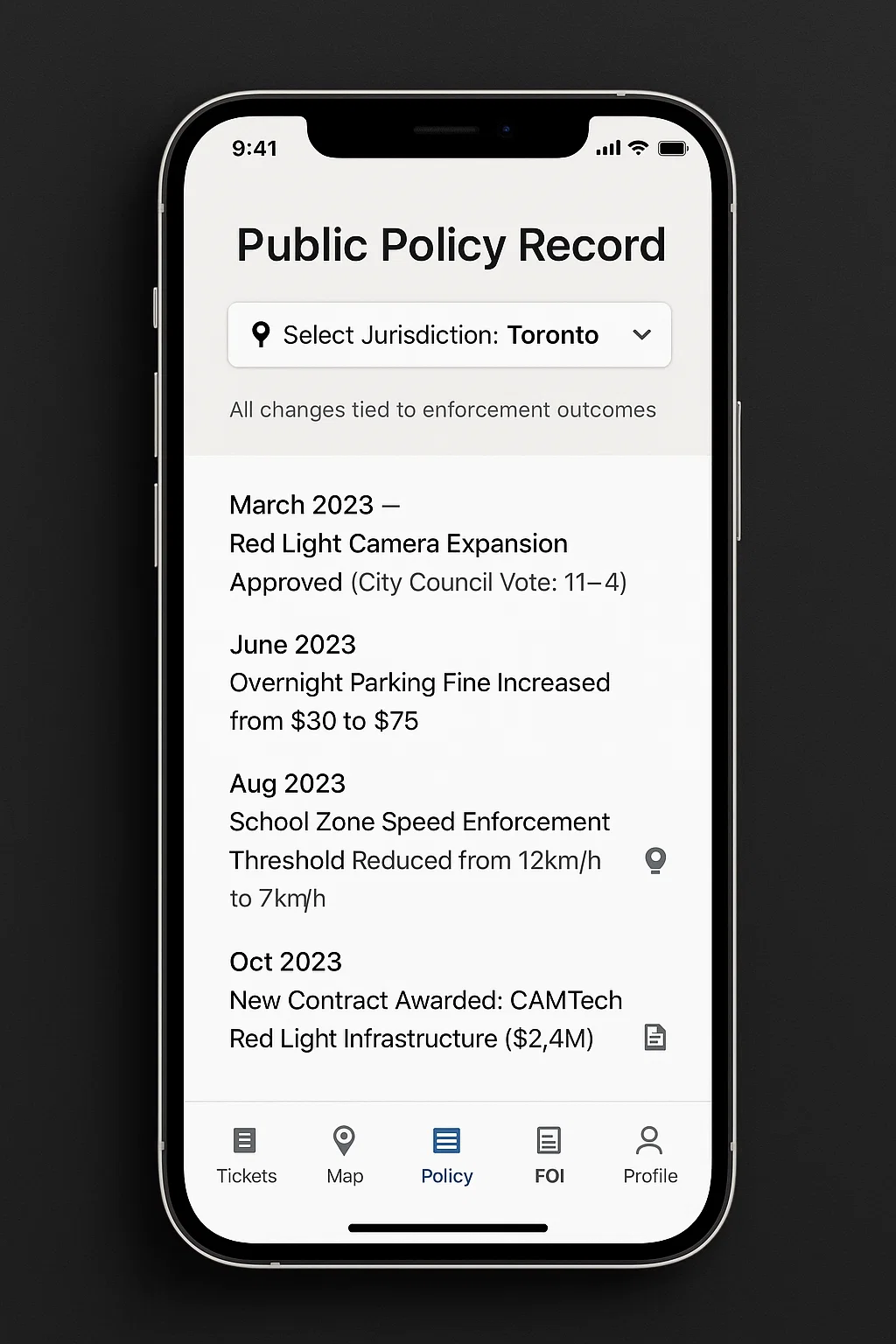
ONE PLATFORM TO TIE THE DATA TOGETHER
The Civic Record
Each ticket. Each bylaw. Each enforcement zone, FOI document, and policy shift. Individually, they’re just fragments scattered across databases, PDFs, and locked filing systems. The Civic Record ties them together.
It’s the connective layer that links enforcement events to the laws that authorize them, the tools that trigger them, and the data that describes them. A growing public ledger of how automated enforcement operates in real cities, with real consequences.
Structured for public use, the Civic Record will help users search, filter, and compare tickets by city, bylaw, time, or location. It will trace camera locations back to contracts, policies, and deployment dates. It will allow citizens to see which bylaws generate the most fines and how often they change. It’s a pathway to navigate from an FOI document to the enforcement data it revealed, and spot trends, anomalies, and enforcement patterns over time.
This isn’t a dashboard for officials. It’s infrastructure for the public. The Civic Record is what happens when transparency becomes structured, not scattered.
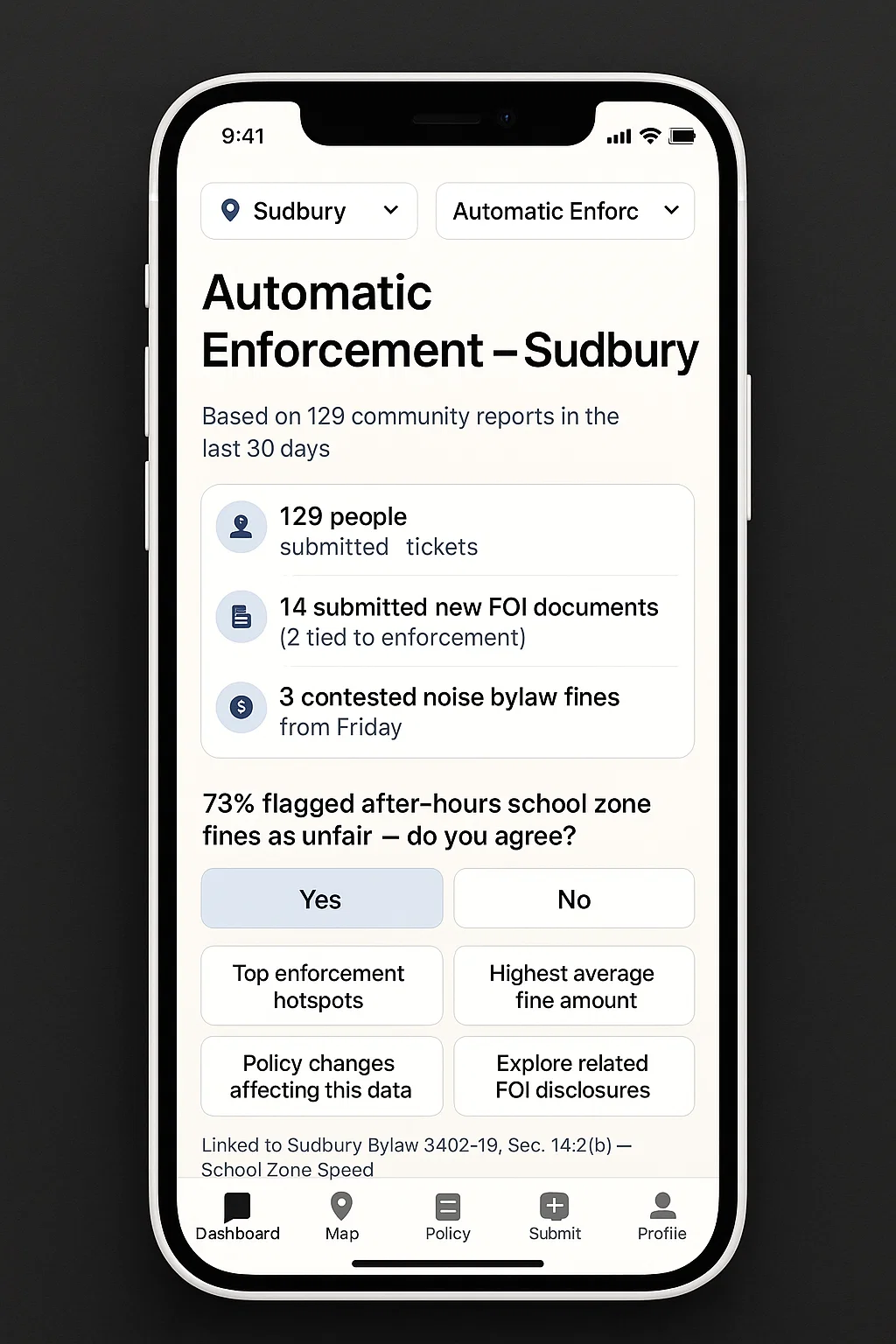
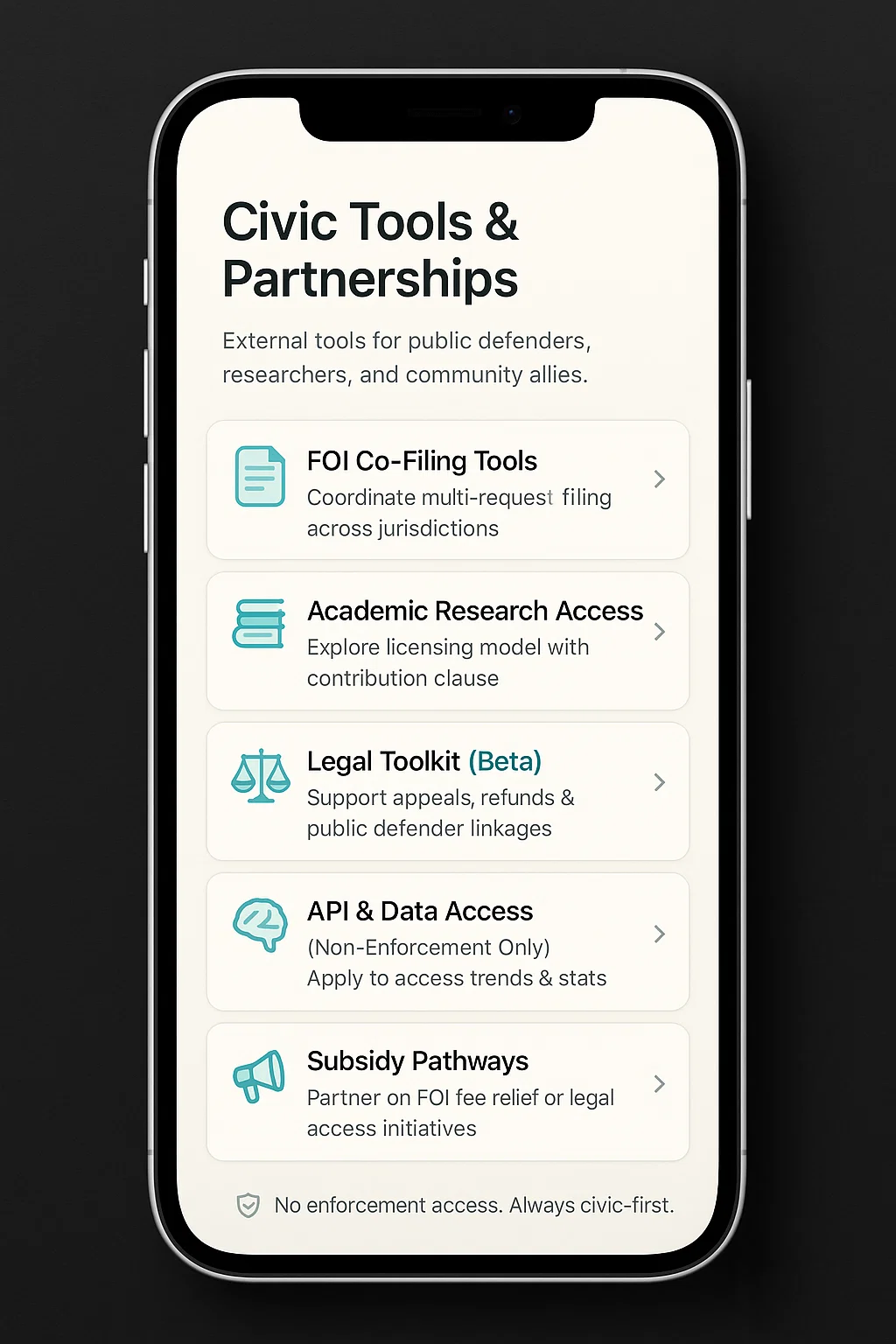
SCALING VISIBILITY THROUGH COLLABORATION
Civic Tools & Partnerships
Transparency doesn’t scale in isolation. 200 Brady Street is designed to be interoperable, a civic backbone others can build on, plug into, or help maintain. As the platform grows, so does its capacity to support shared goals: public trust, policy literacy, legal fairness, and city accountability.
This milestone focuses on external alignment, building tools that work not just for individuals, but for journalists, advocates, researchers, legal aid groups, and civic institutions.
Key capabilities will include:
- Custom enforcement data exports for journalists and watchdogs
- APIs for researchers to surface enforcement trends
- Legal reference linking for public defenders and aid clinics
- FOI co filing tools for community organizations
- Outreach and subsidy pathways for those facing unjust fines
Civic partnerships ensure the data doesn’t sit still. They turn records into action, and insight into reform. These tools are not accessories, they’re proof that accountability is collaborative.
See How the Platform Will Take Shape
The tools on this page are planned features, each one scoped as part of a milestone that will be built when funding allows. You can explore the structure now, and see how public oversight will be created step by step.
Review planned milestones
Understand the sequence of development and the scope of each milestone in the build plan.
Understand the governance model
Every future feature is bound by a governance framework that protects contributors, limits capital influence, and excludes enforcement vendors from backend access.
Explore current public resources
Even before the platform is live, you can review resources and references that frame its public benefit approach.
